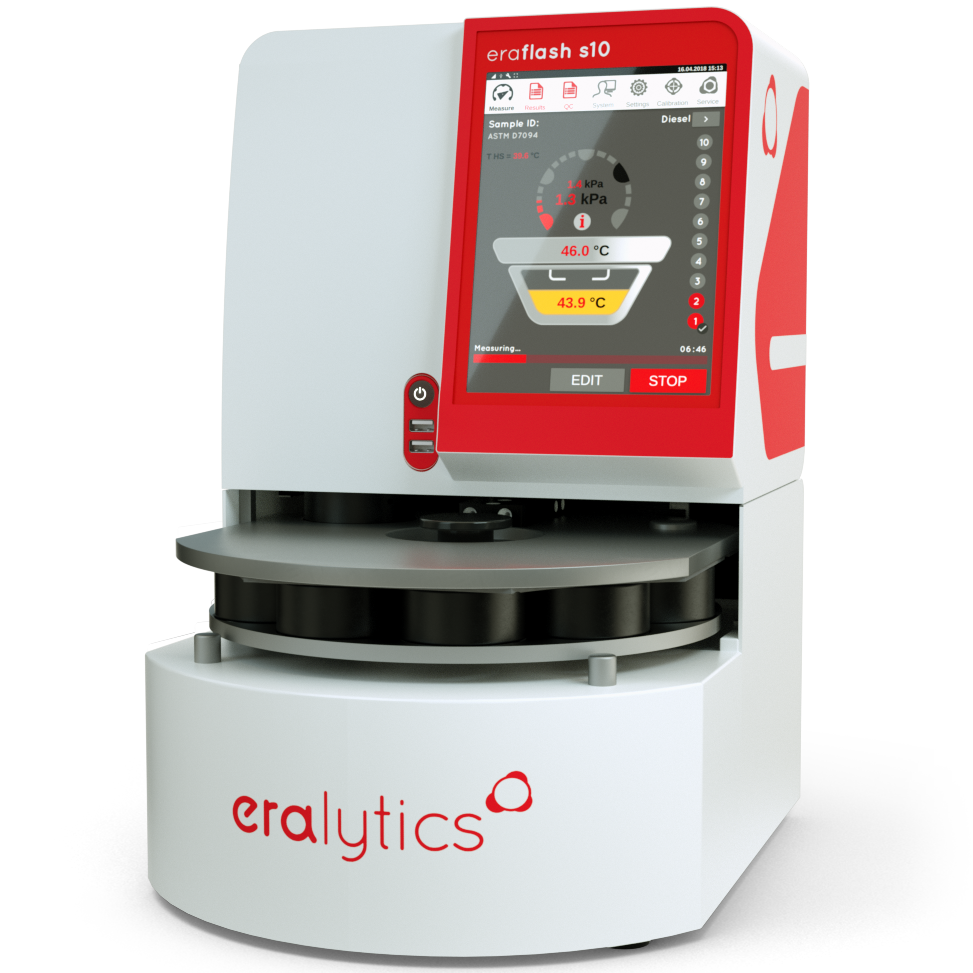ASTM D93
Flash Point by Pensky-Martens Closed Cup Tester
ASTM D93 stands for standard test methods for Flash Point by Pensky-Martens Closed Cup Tester. In these cases, a manual Pensky-Martens closed-cup apparatus or an automated Pensky-Martens closed-cup apparatus are used. The methods cover the determination of the flash point of petroleum products in the temperature range from 40 to 370°C, and of biodiesel by an automated Pensky-Martens closed cup apparatus in the temperature range of 60 to 190°C.
“ASTM D93 test methods provide the only closed cup flash point test procedures for temperatures up to 370°C or 698°F. Determinations above 250°C can also be performed, but the precision has not been determined above this temperature.” (Andreas Schwarzmann, R&D)
Procedure
The ASTM D93 standard test method can be divided into three procedures:
Procedure A covers distillate fuels such as diesel, biodiesel blends, kerosine, heating oil and turbine fuels. It is also applicable for new and in-use lubricating oils and other homogeneous petroleum liquids, that are not included in the other procedures.
With the manual apparatus, the stirring device has to be turned at 90 to 120rpm and the temperature increases 5 to 6°C (9 to 11°F)/min. For test specimen, which have an expected flash point of 110°C or 230°F or below, the ignition source should be applied at a temperature reading that is a multiple of 1°C or 2°F when the test specimen temperature reaches 23 ± 5°C or 41 ± 9°F below the expected flash point. For test specimen with an expected flash point of higher than 110°C or 230°F, the ignition source should be applied at each temperature increase of 2°C or 5°F when the test specimen temperature reaches 23 ± 5°C or 41 ± 9°F below the expected flash point. For an expected flash point above 130°C, it is strongly advised to dip the ignitor every 10°C throughout the test until the sample temperature reaches 28°C below the expected flash point.
Procedure B covers residual fuel oils, cutback residua, used lubricating oils, mixtures of petroleum liquids with solids, petroleum liquids that tend to form a surface film under test conditions and petroleum liquids of such kinematic viscosity that they are not uniformly heated under the stirring and heating conditions of Procedure A.
With the manual apparatus, the stirring device has to be turned at 250 ± 10rpm. The heat rate should be applied so that the temperature as indicated by the measuring device increases 1 to 1.6°C (2 to 3°F)/min.
Procedure C is an electronic flash point detection and covers biodiesel (B100).
With the automated apparatus with an electronic detection, the stirring device has to be turned at 90 to 120 rpm. The ignition source should be applied at a temperature reading that is a multiple of 2°C when the temperature of the test specimen is approximately 24°C below the expected flash point.
The following precision statement covers the Procedures A, B and C: Precision for residual fuels has not been determined for flash points above 100°C – and there is no determination for in-use lubricating oils at all. Some specifications state a D93 minimum flash point below 40°C but the precision has not been determined below this temperature.






